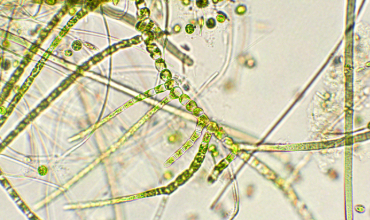Why is Auditing so Important?
The food industry has seen unprecedented technological advancements, significantly enhancing operational efficiency and reducing costs. More importantly, these innovations underscore the pivotal role of internal auditing in daily operations, ensuring compliance with rigorous standards and fostering continuous improvement.
Within food manufacturing – a sector governed by stringent local, national, and international regulations – the stakes are exceptionally high. Compliance is not merely a guideline but a necessity for business survival. Internal audits are crucial as they certify that the food products reaching consumers meet all regulatory requirements. This scrutiny minimizes the risk of incurring penalties and the likelihood of facing costly legal challenges.
However, the benefits of auditing extend beyond external compliance. Internal audits serve as a vital tool for effective management by identifying and addressing bad habits in the food processing chain that can negatively affect the safety of food products. These internal assessments are essential for maintaining operational standards and highlighting areas that require more attention.
Despite their critical importance, internal audits are often viewed as a mere bureaucratic hurdle. It is therefore time for a change in basic assumptions in how these processes are perceived. Rather than seeing internal auditing as an inconvenient necessity, it should be embraced as a fundamental tool for improvement. At the same time, we should also acknowledge that there is no ‘one size fits all’ approach to auditing. While multinational business may have dedicated teams specifically employed tocarry out the auditing and all other associated tasks.This is not necessarily the case in smaller businesses where there is little need for or often lack of resource availability to employ people to focus exclusively on auditing.
Nonetheless, understanding and controlling processes are prerequisite steps toward enhancing them. If a process cannot be measured, it cannot be understood or controlled, let alone improved. Adopting this mindset could transform internal audits from a compliance task into a powerful engine driving quality and efficiency, leading to a more robust and resilient food industry.
Where To Begin Your Internal Audit?
The first step is the formation and training of a food safety team charged with conducting an internal audit. Having such a team is critically important. Organizational size naturally brings with it more complexity and departments. However, having a food safety team can help with such complexities. Furthermore, if your organization has certification, then you have a ‘compliance’ requirement towards having an internal audit. Each team member must know the audit process and be familiar with how to maintain records and internal procedures. They will be charged with detecting and mitigating risks and identifying non-conformances.
It is recommended that a schedule of continuous training will keep your internal audit team up to date with the latest food safety regulations and trends. It guarantees audits are conducted on time and consistently throughout the year and gives an opportunity for your team to define the scope of every food safety audit.
If a particular process has more issues, for instance, you’ll want to boost the frequency of internal audits. Auditing problem areas where you’ve implemented corrective action ensures your leadership team has successfully addressed non-conformances. You should always manage an internal audit as an independent program with its own procedures, cross-department representation, and analysis reporting.
Once again, we must acknowledge that smaller sites may not have the ability to have such a dedicated team. Instead, it is often left to a Quality Assurance manager to carry out similar tasks, these could range from communications and handling to delivery of audit results and everything in between.
Here are some steps to help formalize an internal auditing process:
- Prepare your audit by setting a scope for the audit with the auditee. Part of the scope can be reviewing stakeholder requirements together with earlier audit reports. A tool to help you can be by using a pre-existing checklist
- Details, details, details! Document with detailed descriptions and photographic evidence for evaluations against standard requirements. Do not have auditors simply check off a “complies” or “does not comply” box.
- Complete an audit report, which should include deadlines and assigned responsibilities for conducting root cause analysis and developing corrective action plans.
- Schedule a post-audit finding meeting with appropriate department managers to discuss actions to be taken post-audit.
Creating an Effective Year Plan Should be Risk-based
Well-developed and regularly scheduled internal audits allow your company to take corrective actions before problems occur, protecting your company from recalls, and the financial and brand damage caused by unsafe practices.
Compliance with recognized governmental standards is an important reason for internal auditing in food manufacturing. With proper execution of internal audits, food manufacturers can also identify areas for improvement that deliver financial gains while enhancing overall operational efficiencies.
Beware! The Pitfalls of Auditing
A successful internal audit should confirm that the plant is meeting the planned and established standard. Once the Internal Audit has been concluded, the auditor will meet with the right department staff, confirm the scope or area covered during the audit, read out non-conformities, assign responsibility, and discuss corrective actions.
That said, there are many challenges faced when conducting internal audits, however there are pre-emptive steps that can be undertaken beforehand:
- Develop Internal Audit Program objectives with Senior Management promoting continuous improvement, passing the GFSI Audit, and meeting customer and regulatory specifications.
- Ensure the internal audit is an official event and do not let other work interfere with audit completion or reporting.
- Do not interfere with production activities. Take pictures for training purposes and reduce audit bias by having a cross-function internal audit team.
- Internal Auditors must always remember to audit the system and not the person. By applying this thinking to the audit process, audit programs should be based on mutual trust between the parties involved.
Through these steps, an organization can remedy bad practices, reduce wastage in time, labor, and money, build external trust and deliver internal value to the company with a tried-and-tested approach.
Making Auditing Easier with Software
A problem faced by small-to-medium-sized producers is the reliance on simple ‘home-brewed’ solutions such as Excel spreadsheets which fall far short of capturing the scope and complexities of modern food safety standards. As an auditing resource, those solutions are inadequate and call for much more reliable data delivered quickly to your entire food safety team.
To help effectively manage internal audits, food processing plants are turning to SaaS-based software management tools for better, more reliable data. SaaS is an acronym that stands for ‘Software as aService’ and describes any software that is not run at your premises, never resides on a local machine, and is a full-blown app on its own. It is cloud-based and tamper-proof.
SaaS software is deployed almost immediately. Unlike traditional software, which is sold as a perpetual license with an up-front cost and an optional ongoing support fee, SaaS providers usually ask for a subscription fee. The initial setup cost is typically lower than the equivalent enterprise software.
Using a secure SaaS software solution like FOSS IQX™ users can produce consistently accurate audits, compliance reporting and can analyze multiple data points and find out where most non-conformities occur. It can measure supplier quality, improve food safety, tie your supply chain into a cohesive unit, and provide a coordinating point for the electronic measuring devices used in your plant.









